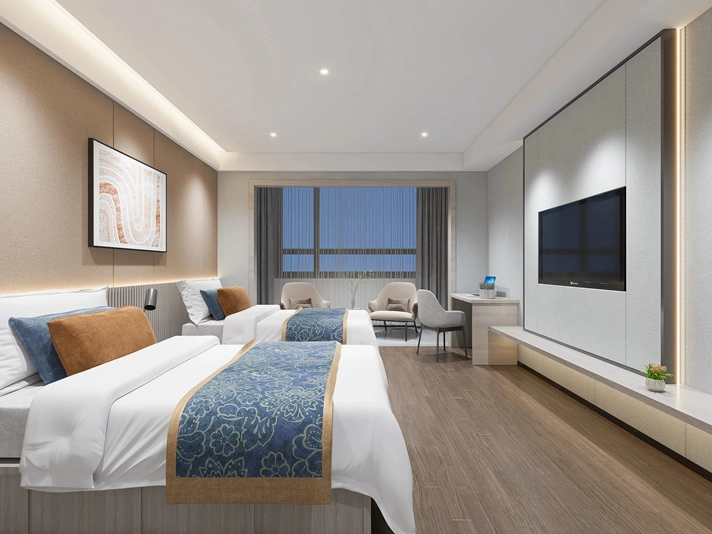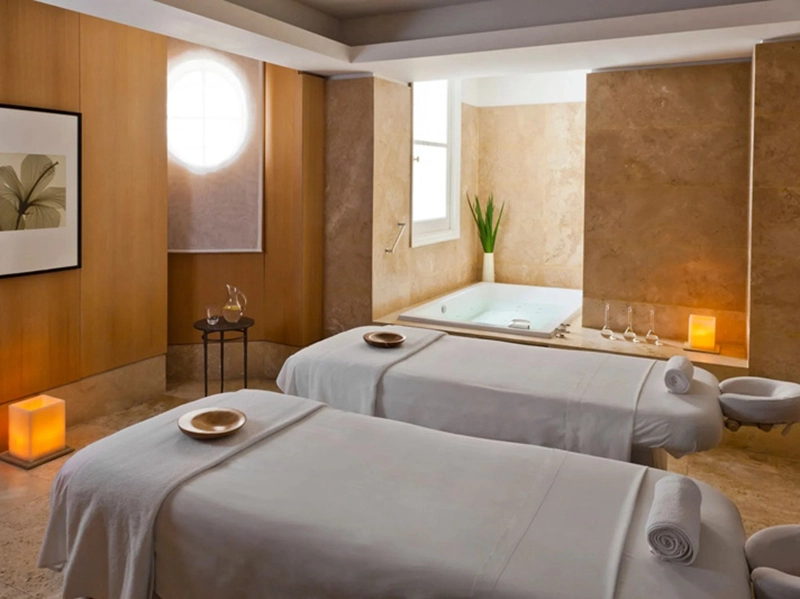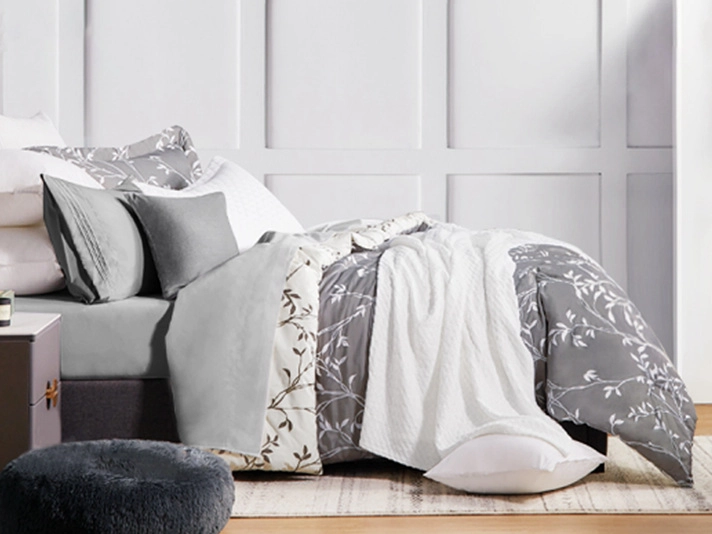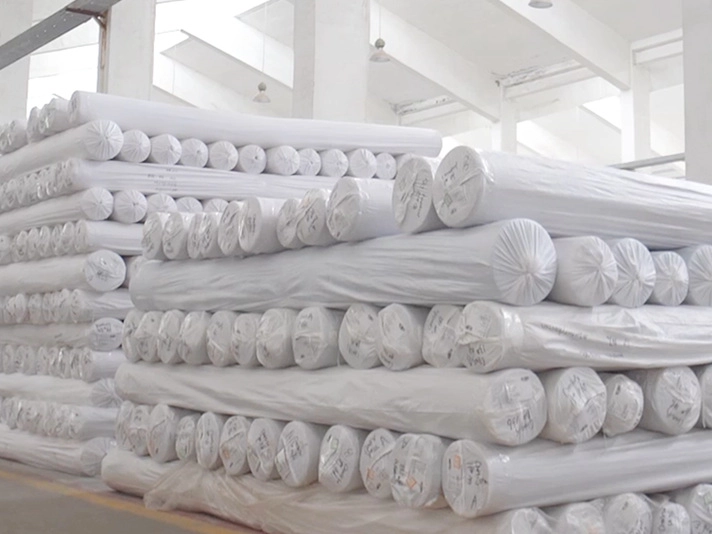Bedding Fabric Suppliers: Global Insights & Industry Trends
The Role of Bedding Fabric Suppliers in Today's Global Marketplace
When we talk about bedding fabric suppliers, we’re really diving into a niche that touches a staggering variety of industries — from hospitality and healthcare to disaster relief and domestic comfort. Why does this matter? Well, consider the global mattress and bedding market which forecasts a steady growth rate of over 5% annually (according to Statista and industry reports). That means the quality, availability, and innovation in bedding fabrics aren’t just luxury concerns — they’re fundamental to health, comfort, and economic livelihoods worldwide.
On top of this, amid fluctuating raw material costs and increased environmental awareness, bedding fabric suppliers are often the hidden stars determining sustainability and pricing in a vast supply chain.
Mini takeaway: Bedding fabric suppliers aren’t just textile vendors; they are pivotal players ensuring comfort and sustainability in a global marketplace.
Understanding Bedding Fabric Suppliers: What They Really Do
Simply put, a bedding fabric supplier provides the raw and processed textiles used to make bed linens, mattress covers, pillowcases, and more. These fabrics range from cotton and polyester to innovative blends designed for moisture management, stain resistance, or antimicrobial properties.
Yet, the term also extends beyond retail. Suppliers cater to manufacturers, hotels, hospitals, and NGOs, each requiring tailored textile properties to meet unique demands. For instance, blankets for post-disaster shelters versus luxury hotel bedding? Two very different fabrics, two different supplier specialization areas.
By bridging raw fiber production with finished textile requirements, bedding fabric suppliers ensure the seamless availability of products that meet both industrial and humanitarian needs.
Key Factors Behind Choosing the Right Bedding Fabrics
Durability and Performance
Anyone who’s worked in the hospitality or healthcare industry knows durability matters. Bedding goes through heavy usage and repeated washes. Suppliers now provide fabrics engineered to retain softness and strength after hundreds of cycles. Long-term tensile strength and abrasion resistance are often tested per ISO standards, which manufacturers rely on when selecting materials.
Comfort and Breathability
Not all fabrics are created equal when it comes to comfort. Bedding fabric suppliers increasingly focus on materials that regulate temperature and wick moisture. Natural fibers like cotton and bamboo, combined with innovative finishes, create breathable bedding that ultimately affects sleep quality.
Cost Efficiency
Balancing price with quality is an eternal challenge. Suppliers offer fabrics at varied price points, often influenced by fiber type, weave, and treatment. Bulk orders and regional sourcing strategies help drive down costs — a vital aspect for large-scale operations or humanitarian agencies on tight budgets.
Sustainability and Eco-Friendly Options
Sustainability isn’t just a buzzword. Bedding fabric suppliers are increasingly accountable for sourcing organic, recycled, or low-impact materials. Certifications like GOTS (Global Organic Textile Standard) give buyers reassurance, and frankly, they’re becoming a purchasing must-have rather than a nice-to-have.
Customization and Innovation
Suppliers today often provide customization options — from tailored prints to specialized fiber blends (think hypoallergenic fabrics). Some even incorporate smart textiles with antimicrobial or odor-control technologies, pushing the boundaries of traditional bedding fabrics.
Mini takeaway: Choosing bedding fabrics is a balance of durability, comfort, cost, sustainability, and innovation — all of which suppliers must expertly navigate.
Global Applications of Bedding Fabrics Across Industries
Take a quick glance around the world and you’ll spot bedding fabrics everywhere:
- Hospitality industry: High-end hotels demand luxurious yet durable textiles that maintain their integrity after frequent laundering.
- Healthcare facilities: Hospitals require sterile, antimicrobial, and durable bedding fabrics to reduce infection risk.
- Disaster relief and NGOs: Organizations depend on reliable suppliers for bedding that’s affordable, quick to produce, and resilient in tough conditions.
- Residential consumers: Growing health awareness drives demand for organic and sustainable bedding options.
For example, in cyclone-prone regions of Southeast Asia, bedding fabric suppliers rapidly produce water-resistant, quick-drying blankets essential for emergency shelters. Meanwhile, in cold industrial zones in Scandinavia, suppliers provide thermal blankets that prioritize insulation without bulk.
Advantages and Long-Term Benefits of Partnering with Reputable Suppliers
The benefits go beyond just having a bed to sleep on:
- Reliability: Consistent quality means fewer product returns and higher customer satisfaction.
- Sustainability: Ethical sourcing and eco-friendly fabrics contribute to corporate social responsibility goals.
- Cost savings: Durable fabrics reduce replacement frequency, helping long-term budget management.
- Social impact: Especially for humanitarian agencies, bedding fabrics can restore dignity and comfort for displaced populations.
- Innovation: Advanced textile options give brands a competitive edge with functional benefits.
In real terms, I’ve seen smaller hotel chains switch suppliers and witness happier guests due to noticeably softer, longer-lasting linens. The human side of it means improved sleep, sense of care, and ultimately trust in a brand.
Product Specification Table for Bedding Fabric Suppliers
| Specification | Standard Range | Enhanced Options |
|---|---|---|
| Material Types | 100% Cotton, Polyester | Organic Cotton, Bamboo, Recycled Fibers |
| Thread Count | 200–400 | 400–800 (Luxury Weaves) |
| Finish Treatments | Standard Dyeing, Wrinkle-Resistant | Antimicrobial, Water-Repellent, Anti-Stain |
| Certifications | ISO 9001, OEKO-TEX | GOTS, Bluesign, Fair Trade |
| MOQ (Minimum Order Quantity) | 500 meters | Flexible on Request |
Comparing Leading Bedding Fabric Suppliers
| Supplier | Product Range | Sustainability Focus | Customization | Global Reach |
|---|---|---|---|---|
| Longshow Textile | Broad: Cotton, blends, organic options | Strong (GOTS-certified) | High (custom prints, finishes) | Asia, Europe, Americas |
| EcoFabrics Co. | Specialized in recycled materials | Very strong | Medium (color options) | Europe, North America |
| GlobalTextiles | Mass market, basic fabrics | Minimal | Low | Global |
Future Trends Shaping Bedding Fabric Suppliers
It’s an exciting time for bedding fabric suppliers. Sustainability is front and center, with increasing investment in biodegradable and recycled fibers. You’ll start seeing more usage of hemp and bamboo blends, which feel nice but also drastically reduce environmental footprints.
On the tech side, some companies experiment with smart textiles embedded with sensors that monitor sleep quality or regulate temperature. Also, digital printing technologies are ramping up, enabling short-run custom designs without massive waste.
Automation in textile manufacturing is reducing lead times and improving quality control, which means suppliers can better meet urgent demands — something relief organizations care deeply about.
Challenges and Practical Solutions in Bedding Fabric Supply
Like any sector, it's not without its hiccups. Raw material price volatility keeps suppliers on their toes, sometimes delaying production or increasing costs unpredictably. Also, ensuring ethical sourcing in complex supply chains remains tricky. I’ve heard of suppliers adopting blockchain to enhance transparency, which feels like a promising path.
Another challenge is balancing innovation with affordability — it's tempting to push high-tech fabrics but not everyone can pay the premium. A hybrid approach, mixing traditional fibers with targeted enhanced finishes, often provides a solution that satisfies multiple buyer profiles.
FAQ: Frequently Asked Questions About Bedding Fabric Suppliers
Q1: What types of fabrics do bedding fabric suppliers typically offer?
A1: Suppliers generally provide fabrics like cotton, polyester, blends, organic cotton, bamboo, and recycled materials. They also offer various weaves and thread counts tailored to different comfort and durability needs.
Q2: How do bedding fabric suppliers ensure their products last through heavy use?
A2: Through rigorous testing for tensile strength, abrasion resistance, and colorfastness, often referencing ISO standards. Additionally, treatments like wrinkle resistance and antimicrobial finishes help extend product life.
Q3: Can bedding fabric suppliers provide custom designs or finishes?
A3: Yes, many suppliers now offer customization such as digital prints, embroidered logos, and specialized finishes like stain repellency or enhanced breathability — perfect for hospitality or corporate clients.
Q4: How sustainable are the fabrics offered by bedding fabric suppliers?
A4: Increasingly sustainable. Many suppliers now offer GOTS-certified organic fabrics, materials made from recycled fibers, and low-impact dyeing processes to meet environmental and social responsibility goals.
Q5: What should humanitarian agencies look for when choosing bedding fabric suppliers?
A5: Agencies typically prioritize affordability, durability, rapid delivery, and easy maintenance. It's also beneficial if the supplier can support certifications or environmental standards, ensuring ethical sourcing.
Conclusion: Why Bedding Fabric Suppliers Matter Now More Than Ever
Ultimately, bedding fabric suppliers play a silent yet powerful role in many sectors around the globe — impacting comfort, health, and sustainability. They offer the materials that dress our beds, support industries, and even help millions in crises. Choosing the right supplier isn’t trivial; it means balancing price, quality, innovation, and ethics.
If you want to explore high-quality, sustainable options, or simply learn more about this intricate market, visit bedding fabric suppliers today. Because honestly, it’s the fabrics we sleep on that can change the way we live.
References & Further Reading
-
Garment Washed Sheets Color Retention Prevents Fading After WashesNewsNov.14, 2025
-
Charcoal Bamboo Sheets Moisture-Wicking Property Enhances Sleep ComfortNewsNov.12, 2025
-
High Quality Satin Sheets Soft Touch Improves Hotel Guest ExperienceNewsNov.12, 2025
-
Poly Cotton Sheets Breathable Weave Reduces Skin Irritation For PatientsNewsNov.12, 2025
-
Microfiber Sheet Stain Resistant Feature Eases Hotel HousekeepingNewsNov.12, 2025
-
Polyester Cotton Bedding Durable Fabric Withstands Frequent Hotel WashesNewsNov.12, 2025
-
Microfiber Pillow Filling Even Distribution Prevents LumpingNewsNov.03, 2025






